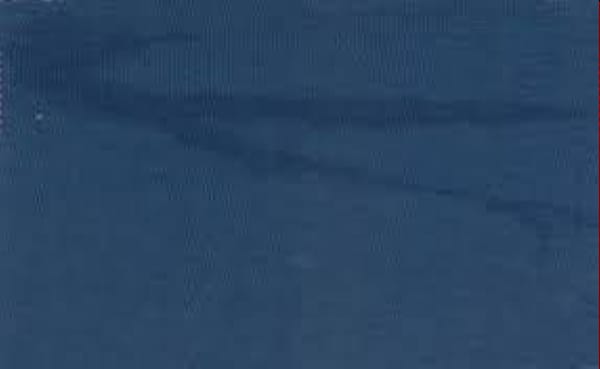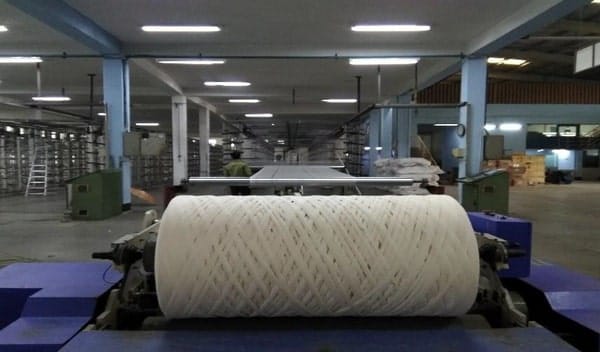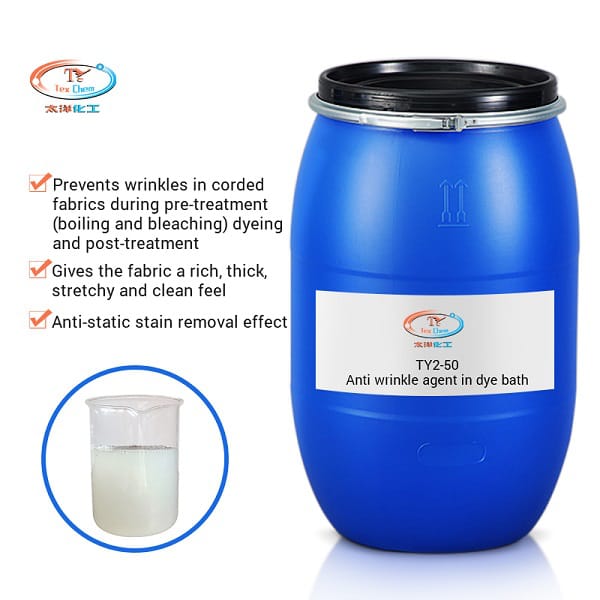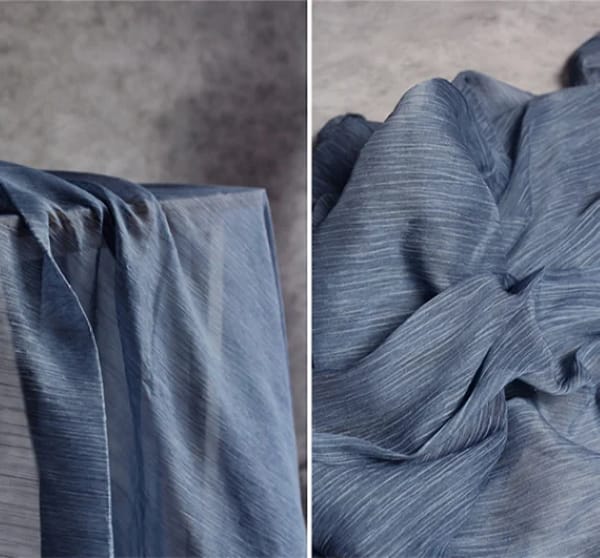

In the fast-paced environment of a dye house, few things are as frustrating as pulling a batch of fabric from the machine only to find it riddled with permanent crease marks. This common issue, particularly in rope dyeing processes, can lead to downgraded quality and significant financial losses. This guide offers an expert look at fabric crease prevention, explaining why creases form and how a specialized anti-wrinkle agent for dye bath use can be your most effective solution. To protect your valuable fabrics, it's time to explore advanced dyeing auxiliaries.

Why do creases form during rope dyeing? Understanding the root cause is the first step toward effective prevention. Permanent creases, often called "crow's feet" or "rope marks," are typically caused by a combination of physical and thermal stresses on the fabric.
During rope dyeing, the fabric is circulated at high speeds in a tangled, rope-like form. This process subjects the material to intense mechanical stress. The constant friction, compression, and potential tangling can create sharp folds. While these folds might be temporary at first, they are the seeds of permanent crease marks.

The real damage is done by thermal shock. When the fabric is heated or cooled rapidly, especially around the glass transition temperature of synthetic fibers, the temporary folds can become permanently "set" into the fabric's structure. Once these creases are set, they are nearly impossible to remove.
Certain fabrics are naturally more prone to creasing. Knits and other delicate fabrics with open constructions have more freedom of movement, making them more likely to fold and crease under mechanical stress. This is why a proactive fabric crease prevention strategy is especially critical for these materials.
The most effective way to prevent creases is to tackle the problem at its source: inside the dye bath. This is where a high-performance anti-wrinkle agent for dye bath application becomes an essential tool among modern dyeing auxiliaries.
The primary function of an in-bath anti-wrinkle agent is lubrication. It forms a protective, ultra-thin film around each fiber. This film drastically reduces the coefficient of friction, allowing the fabric rope to glide smoothly over itself and machine parts. This prevents the formation of sharp, hard folds that would otherwise become permanent crease marks.

Advanced agents also improve the fabric's properties in the water. They can increase the material's bulkiness and elasticity, helping it to resist compression and spring back from folds more easily. This ensures the fabric rope remains softer and more pliable throughout the entire dyeing cycle.
To meet this critical need, Taiyang Chemical has developed TY2-50 Anti-Wrinkle Agent. This product acts as an in-bath guardian for your fabrics, providing robust protection throughout the most demanding dyeing processes.
TY2-50 offers superior lubricity to minimize mechanical stress. But its benefits don't stop there. It also imparts a full, thick, and elastic hand feel to the finished fabric. This means it not only solves a problem but also adds value to your final product, a dual benefit that makes it one of the most efficient dyeing auxiliaries you can use.
Integrating TY2-50 is simple. At what stage of the dyeing process should I add the agent? For best results, it should be added to the bath and circulated with the fabric for 5-10 minutes before commencing the regular operation. A typical dosage is 10-15 g/L. This simple step provides protection from the very start.
The stable formulation of TY2-50 makes it highly versatile. It can be used during pretreatment (scouring, bleaching), dyeing, and post-treatment processes. This means you can rely on a single, effective product for fabric crease prevention across multiple stages of your production line. Discover how our custom textile chemical solutions can be tailored to your needs.
While a high-quality anti-wrinkle agent is your best tool, it works most effectively as part of a holistic strategy.
Pay close attention to your machine settings. A proper liquor ratio, optimized machine speed, and correct loading capacity can all help reduce mechanical stress on the fabric. Your chemical supplier should be able to provide advice on this.
Avoid thermal shock by implementing a gradual cool-down process. Dropping the temperature too quickly is one of the most common reasons for setting permanent crease marks, even if a good anti-wrinkle agent is used.
Permanent crease marks are a preventable defect. By understanding the causes—mechanical stress and thermal shock—and implementing an in-bath protection strategy with a high-performance anti-wrinkle agent for dye bath use like TY2-50, you can ensure flawless fabric quality. This proactive approach not only saves money by reducing rejects but also enhances the final hand feel of your products.

Stop downgrading fabric due to preventable crease marks. Learn how TY2-50 can protect your knits and request a technical data sheet today.
1. Can I just use a regular softener as an anti-wrinkle agent? While a softener provides some lubrication, it is not a substitute for a specialized anti-wrinkle agent. Anti-wrinkle agents are specifically formulated to withstand the harsh conditions of the dye bath (high temperatures, pH changes) and provide the robust, persistent lubrication needed for effective fabric crease prevention.
2. Does TY2-50 Anti-Wrinkle Agent affect the dyeing shade or fastness? No. TY2-50 is a non-ionic agent, formulated to be non-reactive with dyes. It will not affect the final shade, color fastness, or other properties of the dyed fabric, ensuring a high-quality result every time.
3. At what stage of the dyeing process should I add the anti-wrinkle agent? For optimal protection, the agent should be added at the beginning of the process. Circulating it with the fabric for 5-10 minutes before adding other chemicals or raising the temperature allows it to form a protective layer on the fibers first.
4. Is this product suitable for heavy fabrics as well as delicate ones? Yes, TY2-50 is highly effective on a wide range of fabrics. While it is particularly crucial for delicate knits, it also provides excellent protection for thicker fabrics that are prone to creasing due to their weight and stiffness in the rope dyeing process. To discuss your specific fabric, contact our experts today.
